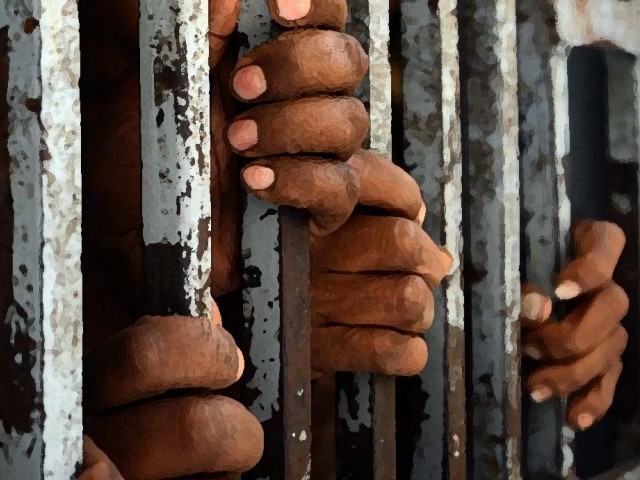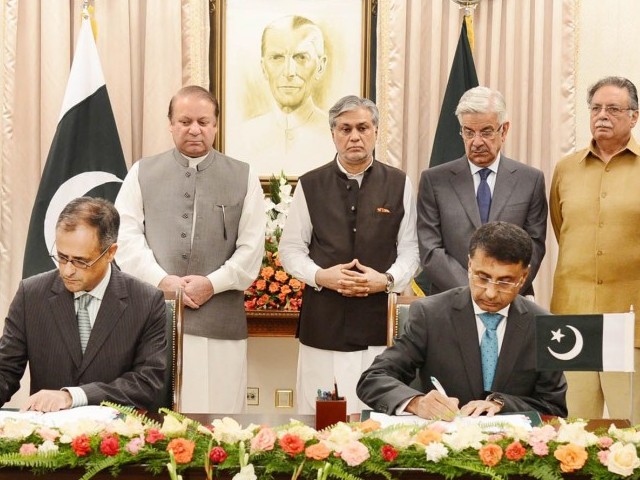Muhammad Omar
ELITE MEMBER

- Joined
- Feb 3, 2014
- Messages
- 13,558
- Reaction score
- 15
- Country
- Location
Qainchi Lahore








Follow along with the video below to see how to install our site as a web app on your home screen.
Note: This feature may not be available in some browsers.




waqt sabit kare gaa ueh dosra nandani pur ho ga


waqt sabit kare gaa ueh dosra nandani pur ho ga

Credit: aftabsolangi ssc
Zamzama Club Redevelopment
Pakistan Business Center













Here is the Full NEWSso you are saying that they are getting 20 Lazar vehicles from Serbia ...
i didn't heard it
might be pic is wrong ... sindh police might go for Mohafiz
Nice pics brother .. Please Do mention City
Samples sent: US to assess potential of Pakistan’s shale gas reserves
\
Exploration companies have already found some traces of shale gas during the search for conventional gas as 10% to 12% of shale gas appears on upper faces of conventional gas. PHOTO: FILE
ISLAMABAD:
Pakistan has sent samples of shale gas to the United States to determine the prospects of reserves of this untapped energy source following encouraging estimates given by the US Energy Information Administration (EIA), officials say.
According to the EIA assessment, Pakistan holds massive shale gas reserves estimated at 51 trillion cubic feet (tcf), close to the conventional gas reserves of 58 tcf.

At present, the government is conducting a study with the technical assistance of US Agency for International Development to prove the presence of huge shale gas deposits in the country.
Sources disclose that USAID has provided $1.8 million in technical assistance for undertaking the study. “Some samples have been sent to the US and research work will be completed in one year,” an official said, adding they were also looking for adopting US technology.
Washington is also imparting technical training to Pakistani officials and employees and engineers of public sector oil and gas companies.
The Ministry of Petroleum and Natural Resources has sent a summary to the Economic Coordination Committee (ECC) of the cabinet, seeking the go-ahead for initiating a pilot project to search and consume the shale gas potential. The move is aimed at gradually bridging the yawning gap between demand and supply of energy.
Shale gas is natural gas that is found trapped within shale formations. It has low permeability compared to conventional reserves, that’s why it does not come out easily and a specific amount of investment and pricing are required to encourage its exploitation.
At present, Pakistan is not producing shale gas and needs to undertake significant initial work to tap this energy resource.
The US, after the discovery of massive shale gas deposits there in recent years, has become a gas-exporting country. In future, reports say, it will experience a boom in shale oil production as well and will become the largest oil producer.
Officials point out that Pakistan will offer $12 per million British thermal units (mmbtu) to gas exploration and production companies under the pilot programme, a price that is close to the cost of gas to be imported from Iran under the Iran-Pakistan pipeline project.
“A policy framework has been prepared and its approval will be sought from the ECC in its upcoming meeting,” an official of the petroleum ministry told The Express Tribune.
According to the official, exploration companies have already found some traces of shale gas during the search for conventional gas as 10% to 12% of shale gas appears on upper faces of conventional gas.
Experts suggest that Pakistan has consumed around 40% of conventional gas reserves and shale gas is the most viable option to meet growing energy needs.
A study conducted by a group of exploration and production companies says the production of shale gas will be economical at about 80% of the price of Brent crude, but this will have to be brought down to 70%.
Apart from shale gas, the government is also planning to drill 400 wells in the next four years in an effort to enhance the country’s oil and gas production.
Though in the past one year new gas deposits had been found, total production of the country stood at almost the same level at four billion cubic feet per day because of depletion of reserves in old fields.
According to officials, the country has added 500 million cubic feet of gas per day (mmcfd) from new finds, but a quantity more than that has been depleted. Therefore, the impact of additional 500 mmcfd is not reflected in overall production.
However, oil output has risen to near 100,000 barrels per day compared to 74,000 barrels per day earlier.
Orange is the new black: Prison reforms to include colour-coded garb for inmates

Colour-coded garb is just one of several aspects of a comprehensive prison reform agenda being implemented PHOTO: AFP
PESHAWAR:
If there ever was any confusion, the Khyber-Pakhtunkhwa government will now ensure inmates on trial and convicts can be told apart by the colour of their uniform. Colour-coded garb is just one of several aspects of a comprehensive prison reform agenda being implemented, The Express Tribune learnt on Thursday.
An official of the prison department who is not authorised to speak to the media said the prison reform plan, initiated with the help of the K-P Home and Tribal Affairs department, has decided to divide the province into four zones. Each zone will be managed by a prison DIG.

“The main focus [of the reform plan] will be on the rehabilitation of prisoners,” shared the official. This will include teaching them technical skills, establishing workshops and computer literacy programmes, he added. A profit share will be worked out for prisoners from the industrial workshops, said the official.
The new uniforms are just one part of the reform plan, he added.
“The aim is to encourage education and those who will pass their matric, intermediate and other degrees might receive some concession to their prison terms,” he said.
Of physical matters
If all goes according to plan, jail hospitals will be fully equipped. Procurement of medicine and equipment will be dealt with by a purchase committee in each district. The local MPA, deputy commissioner and other officials will be part of the committee and will ensure transparency, added the official.
“We are working on another plan to make jails ‘load-shedding free’ by installing solar panels—a project initiated by Home Secretary Akhtar Ali Shah,” the prison department official said. “Each jail will have a separate feeder and 11 jails across K-P have already been provided with water filtration plants.”
“High-security prisons are also planned for Manshera, Timergara, DI Khan and Bannu,” he explained. “The government has agreed to provide funds for these mega projects and work is in full swing.”
It also approved 22 new projects for jails, including 11 new and 11 on-going projects,” added the official.
“We are raising an 800-strong jail security force for which Rs30 million has been allocated by the provincial government,” he concluded.
Tarbela dam attains maximum conservation level


ISLAMABAD - The Tarbela dam on Wednesday attained its maximum conservation level of 1550.00 feet while the Mangla dam was 09.20 feet below its maximum level of 1242.00 feet.
According to the data released by the Indus River System Authority (IRSA), water level in the Indus River at Tarbela Dam was 1550.00 feet, which was 170.00 feet higher than its dead level 1378 feet.
Water inflow in the dam was recorded as 145,000 cusecs while outflow was recorded as 115,600 cusecs. The water level in the Jhelum River at Mangla Dam was 1232.80 feet, which was 192.80 feet higher than its dead level of 1040 feet whereas the inflow and outflow of water was recorded as 23,683 cusecs and 10,000 cusecs respectively. The release of water at Kalabagh, Taunsa and Sukkur was recorded as 193,885, 252,466 and 154,905 cusecs respectively.
Similarly, from the Kabul River a total of 30,700 cusecs of water was released at Nowshera and 46,336 cusecs released from the Chenab River at Marala.
Meanwhile, the IRSA released 202,636 cusecs water for various rim stations with inflow of 245,719 cusecs.
Barrel along: After a decade, Pakistan resumes crude oil export
By Saad Hasan

Shipments: 70,518 tons, is the quantity of ultra-light crude oil exported in the last two months, according to the Pakistan Bureau of Statistics.
KARACHI:
Pakistan has resumed export of crude oil after a gap of 10 years as output touched an all-time high of 98,000 barrels per day (bpd) in June 2014, an increase of 22% over the previous year, officials said.
Around 70,518 tons of ultra-light crude oil – known as condensate – has been exported in the last two months, according to the Pakistan Bureau of Statistics (PBS). The export value is stated at $60.7 million (Rs5.9 billion).
“At least one ship of 32,000-ton capacity is leaving the port every month,” said an industry official. “We expect exports to rise because the output of condensate has gradually increased over the years.”

The petroleum crude is coming from different fields in Sindh and Khyber-Pakhtunkhwa. Three multinational firms, United Energy Pakistan, which took over the assets of BP in the country, OMV and MOL are mostly involved in the exports.
Pakistan State Oil (PSO) has allocated two 55,000 capacity tanks to two of the multinational companies for storing condensate before the shipments are made, said an official.
“These companies want to sign three-year contracts with PSO for using the tanks, indicating their long-term intention to keep the exports going.”
Export of crude started after the discovery of the Badin Gas field along with the by-produce condensate in the 1990s. The refineries initially didn’t have the capability to process the condensate but when Attock and Pak Arab refineries started consuming most of the domestic supply, government restricted exports in 2004.
The average oil production in Pakistan jumped 13% to 86,000 bpd in fiscal year 2013-14 compared to the previous year. The oil output even reached an all-time high of 98,000 bpd by the end of June 2014.
Around 60,000-65,000 bpd of oil is consumed by local refineries, leaving a surplus of 24,000-25,000 bpd for export, said the officials.
A major chunk of the increase in oil output came from the Tal block, which saw average oil production rise 63% to 17,000 bpd. The block contributes 20% of the total oil produced in Pakistan.
PM witnesses signing of Dasu Hydropower Project
By APP
Published: August 26, 2014

PHOTO: INP
ISLAMABAD: Prime Minister Nawaz Sharif witnessed on Monday the signing ceremony of finance agreements with the World Bank relating to the development of the Dasu Hydropower Project and Sindh Agricultural Growth Project.
The agreements worth $588.4 million and $76.4 million respectively were signed by Water and Power Development Authority (WAPDA) chairman along with World Bank country director Rachid Benmessaoud.
During the signing, the premier was told that the Dasu Hydropower Project can potentially produce 4230 MW of electricity that will be developed in two phases.
The ceremony was also attended by Senator Pervez Rashid along with Defense Minister Khawaja Asif and Minister of State for Water and Power Abid Sher Ali.

Credit: aftabsolangi ssc
Zamzama Club Redevelopment



Pakistan Business Center













Neelum Jhelum Hydro Project










 Man i love Neelum Jehlum ab koi yeh na kahe k iska bhi anjaam Nandi Pur jesa hoga
Man i love Neelum Jehlum ab koi yeh na kahe k iska bhi anjaam Nandi Pur jesa hoga 
